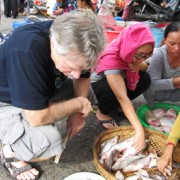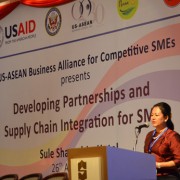Growing conditions for agriculture are diverse in the Lower Mekong Basin, from the mountainous areas of Lao PDR and the Central Highlands in Vietnam to the lowland plains in the Mekong Delta. Farming systems range from traditional shifting agriculture systems dominated by upland rice through industrial plantations, including smallholder intensive rice farmers. This report provides a detailed summary of the issues and trends by ecozone.
This report presents the results of the fisheries component of the USAID Mekong ARCC Climate Change Impact and Adaptation Study. It first provides an overview of the current state of the important capture fisheries and aquaculture systems in the Lower Mekong Basin, focusing on those elements that are threatened by climate change.

The United States Agency for International Development (USAID), National Science Foundation (NSF), and the National Institutes of Health (NIH) have announced 26 new research projects in Asia funded through the Partnerships for Enhanced Engagement in Research (PEER) program a joint initiative designed to foster collaborative global research. Through this competitive grants program, USAID directly supports researchers in developing countries who work with U.S. government-funded U.S. scientists. Two of new projects are funded by USAID’s Regional Development Mission for Asia and will strengthen regional biodiversity research networks and enhance coordinated data collection and monitoring to inform development and policy interventions.

Purpose: The majority of Asia’s population now lives in cities. The percentage of national populations living in urban areas in developing Asia ranges from 15% in Sri Lanka to as high as 74% in Malaysia. While Asia is home to over a dozen megacities with populations of over 10 million, most of the growth in urban dwellers has been occurring in smaller towns and cities. Most of these cities are built along the coast, which makes them vulnerable to the effects of climate change, particularly in countries such as Bangladesh, Vietnam, and the Philippines, which are facing significant climate impacts. The rate of urbanization continues to accelerate while the consequences of climate change, in terms of duration and intensity, are increasing rapidly. Unless we are able to look at these trends and recalibrate our programming, we will be addressing only today’s crises and not tomorrow’s challenges. The core objective of this workshop is to integrate strategic foresight on urbanization trends and solutions in the development program planning process.







Comment
Make a general inquiry or suggest an improvement.